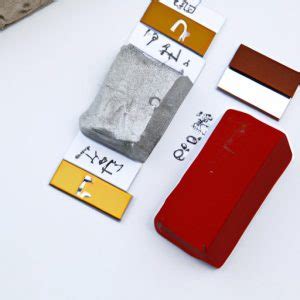How To Tell If Aluminum
Ronan Farrow
Mar 20, 2025 · 2 min read

Table of Contents
How to Tell if Something is Aluminum
Aluminum is a versatile metal used in countless everyday objects, from cans and foil to cookware and airplane parts. Knowing how to identify aluminum can be useful in various situations, from recycling to identifying potential hazards. This guide provides several methods to determine if an item is made of aluminum.
Visual Inspection: The First Step
The easiest way to start is with a visual check. Aluminum typically has a silvery-grey appearance, often described as having a slightly dull or matte finish. However, it can be coated or treated to change its look, so this isn't always conclusive. Look for these characteristics:
-
Lightweight: Aluminum is remarkably light for its size. If the item feels unusually light compared to its volume, it's a strong indicator of aluminum. Compare it to something of similar size made of a different material, like steel.
-
Surface Appearance: While generally silvery-grey, aluminum can be anodized (a process creating a hard, colorfast surface) resulting in a variety of colors. Even anodized aluminum often retains a slightly metallic sheen.
The Magnet Test: A Simple Check
Aluminum is non-magnetic. This is a quick and easy way to differentiate it from many other metals. If a magnet doesn't stick to the item, it suggests it might be aluminum. However, it's not foolproof as some other non-magnetic metals exist.
Important Note: While a magnet not sticking is suggestive, it's not definitive proof. Other non-magnetic metals exist.
Density Test: For More Precision
Aluminum has a relatively low density (around 2.7 g/cm³). A more precise method involves calculating its density. This requires measuring both the mass and volume of the object.
- Measure the Mass: Use a scale to weigh the object.
- Measure the Volume: If the object has a regular shape, calculate the volume using standard formulas. For irregular shapes, use water displacement—submerge the object in a container of water and measure the change in water level.
- Calculate Density: Divide the mass by the volume. If the resulting density is close to 2.7 g/cm³, it strongly suggests aluminum.
Important Note: This requires more precise tools and calculations and is best suited for situations where a more certain identification is needed.
Advanced Testing Methods (for Professionals)
For more definitive identification, particularly in industrial or scientific settings, specialized techniques exist:
- X-ray Fluorescence (XRF) Spectroscopy: This technique identifies the elemental composition of a material, providing a definitive answer.
- Inductively Coupled Plasma Optical Emission Spectrometry (ICP-OES): Similar to XRF, this analytical technique provides accurate elemental identification and quantification.
Conclusion: A Multi-pronged Approach
Identifying aluminum effectively often requires a combination of methods. Starting with visual inspection and the magnet test will quickly eliminate many possibilities. For more certainty, the density test is an effective approach. Remember, combining these techniques increases the accuracy of your identification.
Featured Posts
Also read the following articles
| Article Title | Date |
|---|---|
| How Do You Become A Gideon | Mar 20, 2025 |
| Luwak Coffee How To Brew | Mar 20, 2025 |
| How Do You Join The Black Panther Party | Mar 20, 2025 |
| How To Write A Keepsake Letter To A Grandchild | Mar 20, 2025 |
| Alkaline Water How Long Does It Last | Mar 20, 2025 |
Latest Posts
Thank you for visiting our website which covers about How To Tell If Aluminum . We hope the information provided has been useful to you. Feel free to contact us if you have any questions or need further assistance. See you next time and don't miss to bookmark.
